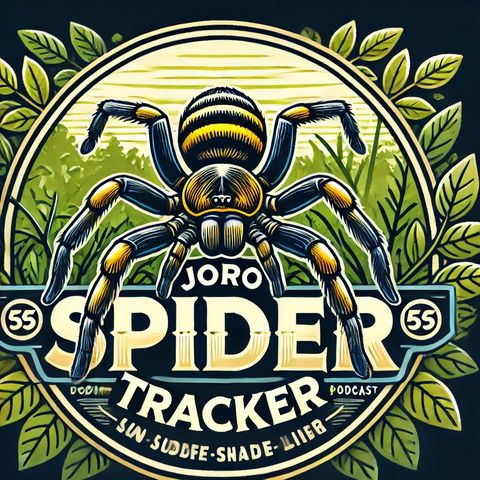Joro Spiders Invade the Southeast: Monitoring the Ecological Impact of This Exotic Arachnid
Jul 12, 2024 ·
2m 43s

Download and listen anywhere
Download your favorite episodes and enjoy them, wherever you are! Sign up or log in now to access offline listening.
Description
The Joro spider, a species native to East Asia, has been garnering attention due to its spread across the southeastern United States and potential arrival in regions like Central New...
show more
The Joro spider, a species native to East Asia, has been garnering attention due to its spread across the southeastern United States and potential arrival in regions like Central New Jersey. This species, scientifically known as Trichonephila clavata, is a member of the orb-weaver family and is particularly known for its striking size and vivid coloration, featuring hues of yellow, blue, and red.
Originating from Japan, China, Korea, and Taiwan, the Joro spider was first reported in the United States around 2014 in Georgia. Since then, it has acclimated to various environments in the U.S., raising questions and concerns about its impact on local ecosystems. The spread of such non-native species can have unforeseen effects on local wildlife and biodiversity. In the case of Joro spiders, researchers are keenly observing whether their presence will disrupt existing ecological balances or if they will become a benign part of the local fauna.
One of the notable characteristics of the Joro spider is its resilience. This species has shown an ability to survive in colder climates, suggesting that it could potentially spread further north than other similar spiders. This resilience combined with their ability to produce a large number of offspring increases their chances of successful proliferation in new areas.
The web of a Joro spider is also distinctive: it is large, often spanning several feet in width, and is quite robust, capable of trapping various kinds of insects. While these spiders do capture and reduce the populations of local insect pests, which could be seen as a beneficial trait, there is also a risk that they could outcompete native spider species, leading to a reduction in native biodiversity.
For residents encountering the Joro spider, the advice is generally to maintain a respectful distance and not to disturb the spiders when found outdoors. They are not aggressive towards humans and typically only bite in self-defense when mishandled. The venom of the Joro spider is not harmful to humans, causing effects no more severe than a mild redness or itching at the site of a bite.
Educational and management strategies are being considered to monitor the spread of Joro spiders and to assess their ecological impact. Research is ongoing to determine effective methods to manage the population growth and spread of this invasive species without adversely affecting the local ecosystems. Balancing the ecological dynamics with the new addition of the Joro spider will be key to maintaining biodiversity and the health of ecosystems in the regions they inhabit.
show less
Originating from Japan, China, Korea, and Taiwan, the Joro spider was first reported in the United States around 2014 in Georgia. Since then, it has acclimated to various environments in the U.S., raising questions and concerns about its impact on local ecosystems. The spread of such non-native species can have unforeseen effects on local wildlife and biodiversity. In the case of Joro spiders, researchers are keenly observing whether their presence will disrupt existing ecological balances or if they will become a benign part of the local fauna.
One of the notable characteristics of the Joro spider is its resilience. This species has shown an ability to survive in colder climates, suggesting that it could potentially spread further north than other similar spiders. This resilience combined with their ability to produce a large number of offspring increases their chances of successful proliferation in new areas.
The web of a Joro spider is also distinctive: it is large, often spanning several feet in width, and is quite robust, capable of trapping various kinds of insects. While these spiders do capture and reduce the populations of local insect pests, which could be seen as a beneficial trait, there is also a risk that they could outcompete native spider species, leading to a reduction in native biodiversity.
For residents encountering the Joro spider, the advice is generally to maintain a respectful distance and not to disturb the spiders when found outdoors. They are not aggressive towards humans and typically only bite in self-defense when mishandled. The venom of the Joro spider is not harmful to humans, causing effects no more severe than a mild redness or itching at the site of a bite.
Educational and management strategies are being considered to monitor the spread of Joro spiders and to assess their ecological impact. Research is ongoing to determine effective methods to manage the population growth and spread of this invasive species without adversely affecting the local ecosystems. Balancing the ecological dynamics with the new addition of the Joro spider will be key to maintaining biodiversity and the health of ecosystems in the regions they inhabit.
Information
| Author | QP-4 |
| Organization | William Corbin |
| Website | - |
| Tags |
Copyright 2024 - Spreaker Inc. an iHeartMedia Company
